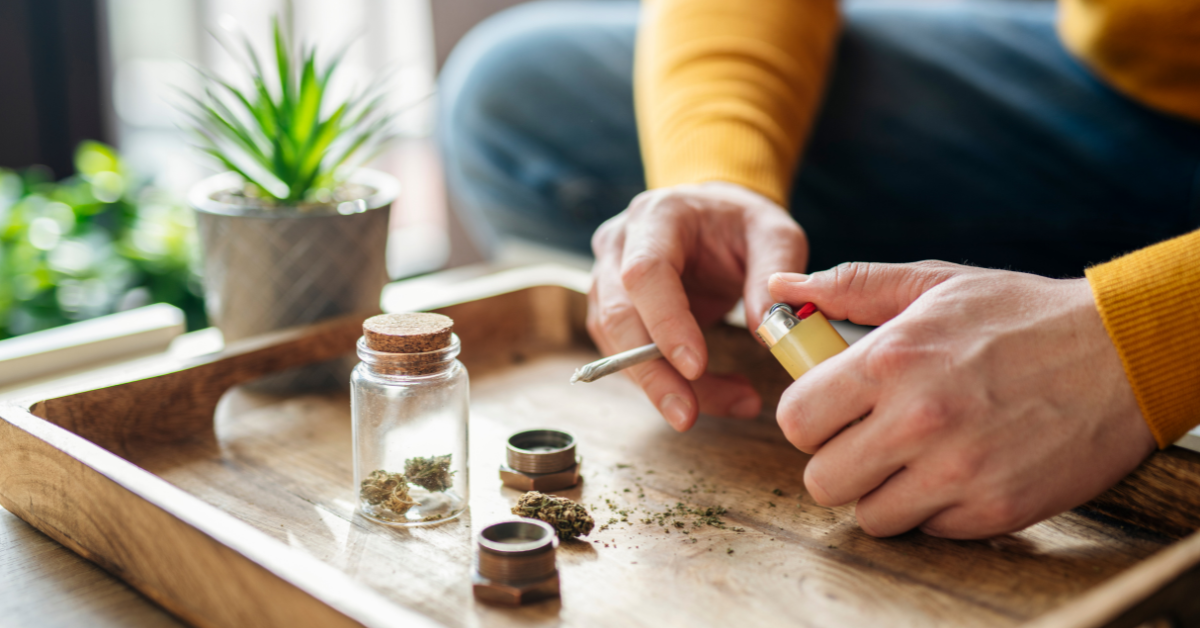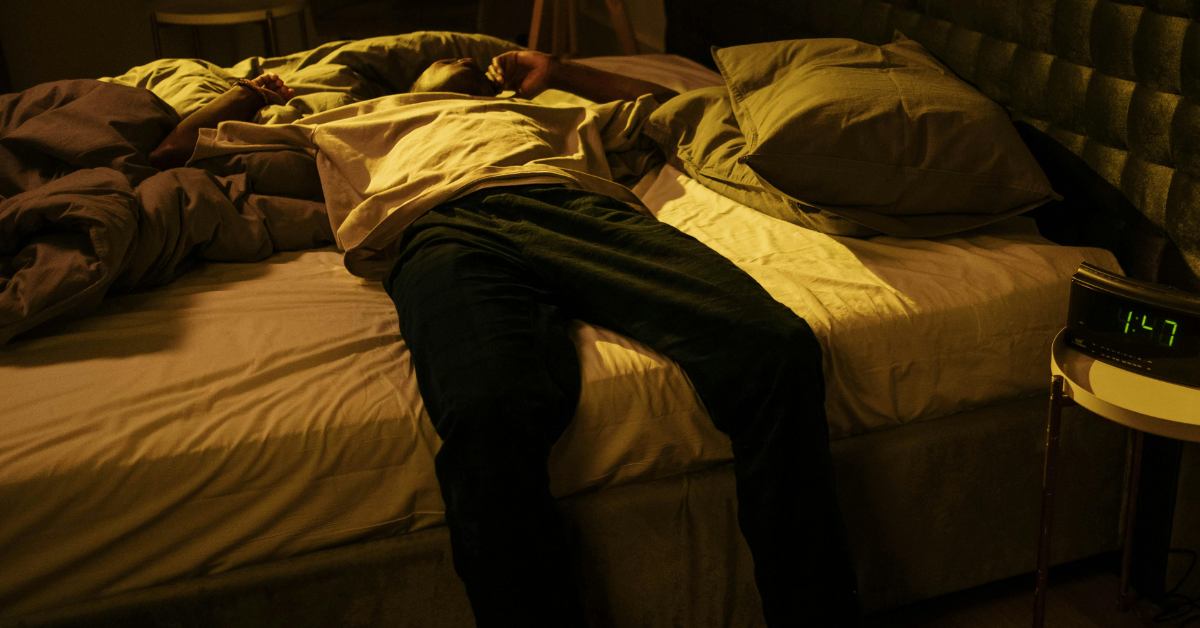“California sober” is trending on social media, suggesting people can use marijuana or alcohol while staying away from harder drugs. Celebrity endorsements have made this controversial idea popular, but it can derail your recovery trip and sobriety goals.
Real recovery starts with understanding why using marijuana or alcohol can hurt your progress toward sobriety. Studies show this approach often increases substance abuse and affects your decision-making abilities, leading to relapse. This piece will show you the science that proves why “California sober” methods don’t work. You’ll learn about marijuana’s hidden risks and see why complete abstinence builds the strongest foundation to stay sober.
Debunking the ‘California Sober’ Myth
The term “California sober” became popular at the time pop singer Demi Lovato introduced it in her documentary “Dancing with the Devil.” She promoted this approach as a path to recovery during her original stance but later withdrew her support and adopted complete abstinence.
Origins and popularity of the term
The concept of California sober started as a loose definition that gives people the ability to use marijuana or alcohol while staying away from “harder” drugs. People love how flexible this term can be – though that’s also what makes it risky. Different people have their own take on it. Some include psychedelics or other substances they call it “safer.”
Misconceptions about harm reduction
The concept of California sober misrepresents the true principles of harm reduction. Advocates claim this approach reduces harm, but several critical issues make this stance problematic.
- The approach creates artificial distinctions between substances labeled as “safe” or “dangerous”
- People often overlook how different types of substance use disorders connect and influence each other
- The brain remains dependent on substances that alter mood
- Users might justify their continued substance use through this method
Scientific Evidence Against Partial Sobriety
Long-term recovery works best through complete abstinence. Your risk of relapse goes up by a lot if you keep using mood-altering substances. People who try to manage moderate use often end up going back to their main drug of choice.
Your brain must heal and balance its natural reward system. Using any substances blocks this vital healing process. Nearly 50% of people relapse within a year of treatment, and this is a big deal as it means that the risk climbs higher when people continue using mood-altering substances.
Moderation doesn’t work well for people with substance use disorders. Complete abstinence builds a strong foundation for your recovery. This helps you tackle addiction’s root causes and develop healthy ways to cope that last.
The Hidden Dangers of Marijuana Use
The use of marijuana as part of a California sober approach requires you to understand the key risks that people often overlook. Research has revealed troubling statistics about marijuana’s effects on your brain and overall well-being.
Addiction Potential of Cannabis
Many people believe marijuana isn’t addictive, but studies show that 1 in 10 users develop cannabis use disorder. The risk becomes significantly higher for teenagers, with a troubling 1 in 6 chance of addiction. Daily users face an even more serious situation as their addiction risk climbs to almost 50%. These numbers clearly show why marijuana should not be considered a “safe” alternative during recovery experience.
Cognitive and Mental Health Effects
Regular marijuana use can greatly affect your cognitive functions and mental health. Scientists have found several concerning effects:
- Memory and learning abilities suffer
- Motivation and drive decrease
- Anxiety and depression risks go up
- Psychosis can trigger if you are susceptible
- Decision-making abilities decline
Your brain keeps developing until you’re 25. Regular marijuana use during this crucial time can create permanent changes in your brain’s structure and function. Research shows that heavy use at an early age might lower your IQ by up to 8 points, and these changes stick around even after you quit.
Gateway Effect to Other Substances
The gateway drug theory generates ongoing debate in scientific circles. Research indicates marijuana can change how your brain responds to other substances. Studies show that early cannabis exposure may alter how your brain processes dopamine. This alteration could make you more vulnerable to other forms of substance use. The risks increase especially when you have ongoing sobriety goals for other substances while using marijuana.
Clear thinking creates the strongest foundation for your recovery journey. Substances that impair judgment and decision-making can compromise your progress. Your path to recovery needs protection from potential relapse triggers. A complete understanding of these hidden risks will help you make better choices about your recovery strategy.
Alcohol: Not a Safe Alternative
People who choose alcohol as a “safer” option in their California sober trip face the most important risks that need careful thought. The science reveals a different story about alcohol’s effect on recovery, even though some might see moderate drinking as harmless.
Risks of Moderate Drinking For Recovering Addicts
Recovery makes your brain’s reward system vulnerable. Even moderate alcohol consumption can trigger intense cravings that lead you back to your preferred substance. The risk multiplies if you have a family history of substance abuse. Research shows these people face 4-10 times higher chances of developing addiction problems when they drink alcohol.
How Alcohol Affects Decision-Making and Impulse Control
Alcohol substantially affects your brain’s executive functions, even in small amounts. Your brain starts showing these significant changes:
- Your judgment and alertness decrease with the first drink
- You lose your natural ability to spot relapse warning signs
- Your impulse control and decision-making skills weaken
- You become more likely to take unnecessary risks
- Your recovery goals become harder to maintain
Long-term Health Consequences
Alcohol use puts your physical health at serious risk. Studies indicate there is no perfectly safe level of alcohol consumption, and these risks start at the lowest levels. The effects over time can damage your brain, heart, liver, and immune system.
The false belief about safe, moderate drinking can derail your recovery trip. Even occasional drinking can lead to what experts call “cognitive myopia” – your focus narrows and you become less likely to think about the risks of your actions. This becomes more dangerous as you try to stay sober from other substances.
Your body and mind need to heal during recovery. Choosing alcohol as part of a California sober approach puts you at risk of relapse and slows down your brain’s natural healing. Your body won’t return to full health. Research shows that alcohol abuse is a progressive disorder, and what starts as moderate drinking often gets worse, especially when you have a history of substance use.
The Path to Genuine Recovery
Real recovery starts with complete sobriety. Partial solutions like the California sober approach won’t work. Your experience toward lasting wellness needs more than avoiding certain substances while using others – it needs a complete transformation of your life.
Importance of Complete Abstinence
Complete abstinence gives your brain and body a chance to heal fully. Research shows that 66% of individuals who maintain total sobriety achieve long-term recovery, compared to much lower success rates with partial approaches. Your recovery trip becomes clearer and easier to manage if you avoid all mood-altering substances.
Everything in successful abstinence includes:
- Professional medical supervision during withdrawal
- Regular participation in support groups
- Development of healthy coping mechanisms
- Consistent accountability partnerships
- Clear boundaries with triggering situations
Addressing Root Causes of Addiction
Your path to lasting recovery depends on understanding what triggers your substance use. Several factors can shape your path:
| Root Cause | Impact on Recovery |
|---|---|
| Trauma | Requires therapeutic processing |
| Mental Health | Needs professional treatment |
| Genetic Factors | Needs heightened awareness |
| Environmental Triggers | Requires lifestyle changes |
Building a Sober Lifestyle
Your recovery extends beyond abstinence – it’s about creating a life worth staying sober for. New routines, interests, and relationships that support your wellness experience need development. Studies indicate that individuals who build strong support networks are twice as likely to maintain long-term sobriety.
Your new lifestyle should make physical and mental health a priority through regular exercise, proper nutrition, and adequate sleep. Activities that engage your interest and provide purpose will naturally fill the void left by substance use. Note that recovery isn’t just about stopping substance use – a new chapter of your life focused on growth, healing, and authentic connections begins here.
Is “California Sober” The Way to Go?
Research shows that trying to stay partly sober through the California sober method hurts your chances of recovery by a lot. People who keep using marijuana or alcohol while trying to quit other substances relapse more often. Your brain needs to be completely free from mood-altering substances. This helps it heal and create new, healthy behavior patterns.
Staying completely sober gives you the best chance for lasting recovery and personal growth. The evidence is clear. People who accept complete sobriety have better mental health, stronger relationships, and stay in recovery longer than those who try moderation or partial approaches. You deserve to take this proven path to success. Professional guidance, peer support, and building a life that meets your needs will help you succeed in your recovery. Have questions? Give us a call.





17 thoughts on “Threats to Your Sobriety: California Sober”
I don’t believe there is such a thing as California Sober. There’s either sober and not sober – end of story. Elton John said so himself.
I think the California sober idea is so very, very dangerous. Addicts are addicts, and they can easily replace one drug with another.
Oh, no. California sober is not the way to go. It’s not a threat to sobriety, it’s a roadblock. Clean and sober doesn’t mean using something other than what you used to use!
I’ve not heard the term California Sober before. It sounds like a term that can be used to the persons advantage which isn’t ideal. I don’t take drugs but do drink occasionally. Never to the degree of being drunk or losing control, I’m too much of a control freak for that.
As a native Californian, I did not know about this term. I do believe that if you want to be sober you have it give it all up and cant pick and choose what you want to give up.
I totally agree. I think that if a person has a tendency to get addicted, he can fall into another form of addiction if he relies on this california sobriety technique. I don’t think that works at all.
This makes complete sense! If you’re addicted to a substance, it’s best to refrain from anything that has addictive properties or that would encourage a habit to reform.
This post really opens your eyes to the challenges of staying sober. I didn’t know much about “California sober” before, but now I can see how tricky it can be. Very insightful!
This is very insightful. I really love how you emphasizes that we should jot really depends on our decision especially if we are drinking alcohol because it decreases our capability to think wisely.
This is a very good informative post about “California Sober”! I know so many people who has done good with being sober and many who have fallen off. It is a daily challenge for them that’s for sure.
I appreciate how you highlighted the importance of understanding personal triggers in sobriety. Thank you for sharing.
It is an interesting article! I know many people who think marijuana is a very light drug, but I stay away from it. Plus, alcohol addiction doesn’t seem better.
hank you for breaking down the risks of the ‘California sober’ approach and emphasizing the importance of complete abstinence in recovery. Your detailed explanation of the science and practical strategies provides clarity and hope for those seeking a strong foundation for lasting sobriety. <3
Recovery is personal but we must acknowledge that substituting one substance for another is a risk. The part about true sobriety and self awareness really hit home – sobriety is about building a fulfilling and healthy life not just abstaining from certain substances. Great advice for anyone in recovery and a reminder to reflect and have a strong support system.
The idea of “California sober” never fully sat right with me, but I couldn’t quite explain why. Now I understand that it could actually make things harder in the long run.
It is good to know about the different elements of sobriety and treatment. There is a lot that goes into health, management, etc. and it is important to know all of the aspects.
Moderation doesn’t work for addiction. As one alcoholic put it: ‘If you were allergic to shellfish, you wouldn’t eat just a little—you’d avoid it completely. It’s the same with alcohol! Read the big book!